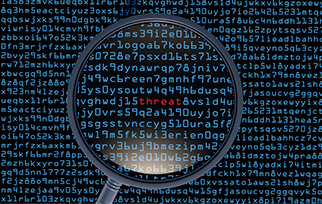An Information Security Management System (ISMS) is a systematic approach to managing sensitive company information so that it remains secure. It includes people, processes, and IT systems by applying a risk management process.
An ISMS framework helps in the protection of information from a wide range of threats and brings business continuity. It minimizes business risk and maximizes return on investments and business opportunities.
Fundamentally, an ISMS is designed to shield sensitive data from being accessed, disclosed, modified, or destroyed without authorization. Given the critical dependence on information technology across business sectors, implementing strong security protocols is essential.
The international standard ISO/IEC 27001 specifies the necessary steps for the development, enactment, operation, supervision, evaluation, preservation, and enhancement of an ISMS. In this blog, we’ll discuss steps to implement ISMS frameworks. Before that, let’s discuss some related aspects.
Understanding the Importance of ISMS Frameworks
Implementing an ISMS significantly helps safeguard critical business data from theft, damage, or loss, owing to both external threats and internal vulnerabilities. In today's digital age, protecting information assets is paramount, and failure to do so can result in severe consequences including financial losses, reputational damage, and legal penalties.
Risk Mitigation
Through ISMS, organizations can recognize and address risks effectively. By having an ISMS implementation process, retail businesses can take preventive measures against potential breaches of payment card information, thereby averting substantial economic losses.
Data Security
An ISMS maintains the integrity of sensitive data by preventing unauthorized access or data breaches. For example, financial institutions that adopt an ISMS can safeguard their customers' financial information against cyber threats.
Continuity of Operations
An ISMS prepares organizations for rapid recovery from disruptions by including disaster recovery strategies. A manufacturing facility affected by a cyberattack can resume operations quickly, reducing the impact of downtime.
Regulatory Adherence
By implementing an ISMS, organizations comply with relevant industry regulations and standards. For instance, a healthcare provider using an ISMS stays in line with HIPAA requirements, ensuring patient privacy and avoiding legal consequences.
Enhanced Reputation
Employing stringent information security measures through the ISMS framework improves a company's standing. A cloud service provider that implements an ISMS is seen as committed to safeguarding client data, which can attract additional clientele.
Stakeholder Confidence
An ISMS builds trust among customers, partners, and investors. E-commerce platforms with reliable ISMS ensure personal and financial information remains secure, thus enhancing consumer confidence.
Cost Efficiency
An ISMS helps in preventing data breaches and the associated costs from such incidents. Universities with effective ISMS frameworks avoid expenses related to legal issues and efforts to rebuild their reputation.
Employee Security Training
An ISMS involves training programs that alert employees to security vulnerabilities and responsibilities. IT companies understanding the importance of ISMS framework with this training in place better prepare their staff to fend off phishing and malware.
Strategic Security Thinking
ISMS encourages a security-conscious organizational culture. Insurance companies with integrated ISMS practices ensure that security protocols are woven into their long-term strategic planning.
Optimal Resource Allocation
An ISMS implementation steps aids in the judicious distribution of resources by prioritizing critical risks. Government entities with an ISMS ensure that scarce resources are utilized to counteract major cybersecurity threats efficiently.
Strengthened Vendor Relations
Compliance with an ISMS improves connections with business partners and vendors. Software companies with an effective ISMS can demonstrate their commitment to secure coding practices to prospective clients.
Adaptability to Emerging Threats
An ISMS provides the framework for evolving security protocols to tackle new and changing threats. Energy companies benefit from an ISMS that keeps them ahead of novel cybersecurity challenges in a dynamic environment.
Market Competitiveness
Organizations possessing an ISMS certification are distinguished in the marketplace. A telecommunications firm boasting an ISO 27001 certification underscores its dedication to maintaining industry-standard security measures.
Response to Incidents
An ISMS framework encompasses comprehensive plans for incident response. In cases like data breaches, online retailers equipped with an ISMS can manage and mitigate damage to their reputation swiftly.
International Recognition
ISO 27001 certification globally acknowledges robust security protocols. International shipping companies with this certification can elevate their global reputation.

- Acquire Essential Knowledge
The primary requirement for building an ISMS is gaining the necessary knowledge. There are various companies having expertise in the ISMS implementation process.
It's crucial to evaluate companies and choose which is more suitable. A successful ISMS implementation begins with a clear understanding of organizational objectives. Senior management should establish a coherent policy and objectives which reflect business needs and compliance requirements. Initial planning should also involve defining the scope of the ISMS which can be integral to managing later stages effectively.
- Obtaining Management Approval for ISMS Framework Implementation
Once the policy is formulated, it’s time to gain management’s endorsement. For organizations, convincing management involves demonstrating how proactive processes can reduce costs by mitigating risks and streamlining business processes.
The team also needs to emphasize ISMS 'role in reducing the potential for security breaches that can also cut costs. Most importantly, certification such as ISO 27001 enhances an organization’s reputation in managing Cybersecurity and Information Security, which customers value highly. Thus, obtaining managerial approval is essential as it shows company-wide commitment from the top down.
- Documenting Statement of Applicability,Policies, and Procedures
Identifying relevant security controls is efficiently managed using a simple spreadsheet. Document your selections in a Statement of Applicability, detailing which controls are being implemented, which are not, and the reasons for each decision. Justifying why certain controls are omitted is crucial for a comprehensive statement.
In this step, organizations also create policy, and procedures documents. These policies should be clear, concise, and easily understandable so that every employee can follow without any issue. The development of these policies should be aligned with the objectives identified and should address areas like access control, physical security, and incident management.
- Conduct Gap Assessment
Once you've decided on the company doing ISMS implementation, or have the internal team for that purpose, determining how to begin can be challenging. The next step is to conduct a security audit or at least a gap assessment.
This process helps evaluate the current security status of the organization and identify what controls are already in place. Here, it is important to prepare well for the information security management system framework, so you should draft an audit or gap assessment plan. The following questions guided me in performing a thorough gap assessment.
Ensure these questions are addressed in your plan. If unsure about any answers, consult your manager or colleagues for guidance. Additionally, familiarize yourself with the company's mission, vision, organizational structure, business model, and infrastructure prior to the gap assessment. Make sure to request this information well in advance and review it thoroughly.
Those questions are:-
- What should the audit cover?
- Do we need to bring in any subject matter experts, or do we possess the needed expertise?
- Who needs to be involved?
- When should interviews be scheduled?
- How will we gather evidence?
- What criteria should we use for the audit?
- What audit methods will we employ?
- Concluding Risk Assessment
Initially discussed was the importance of understanding the context and recognizing potential risks to information security. The subsequent step involves agreeing on a procedure to assess these risks and determine their severity.
Although some may find risk assessment daunting due to complex methods available, starting with a basic methodology is perfectly acceptable. Simply posing questions about potential threats and sources of compromise can kickstart this process.
After finalizing your risk treatment strategy and deciding on necessary actions, examine ISO 27001’s Annex A in next ISMS implementation steps. The Annex A lists 114 security controls. It might seem overwhelming, but every control doesn’t need to be implemented. Select controls relevant to your organization, based on the prior risk assessment. This selection process is pivotal.
Training and Awareness Programs for ISMS Implementation
A vital aspect often overlooked is the human factor. Training and awareness programs are essential as they help ensure that employees know the importance of ISMS Frameworks and they understand the role they play in maintaining security and adhere to the ISMS practices effectively. Regular training sessions and updates can instill a culture of security throughout the organization.
Ensuring Compliance with Legal and Regulatory Requirements
An effective ISMS must ensure compliance with various legal and regulatory requirements. This includes laws related to data protection, such as GDPR for organizations operating in or dealing with the European Union. Non-compliance can lead to severe penalties and damage to business credibility.
Monitoring, Measurement, and Continuous Improvement
The ISMS framework is not a one-time effort but an ongoing process that requires continual monitoring and review.
This involves regular audits of the controls, assessing them against the objectives of the ISMS to determine their effectiveness and making improvements where necessary. The cycle of monitoring and continuous improvement helps to adapt to evolving security threats or business changes.
Auditing and Certification of ISMS Implementation
Getting your ISMS independently audited and certified can be beneficial, especially under standards such as ISO/IEC 27001. This not only provides a formal method of identifying any weaknesses and non-conformities but also serves as a trust and assurance measure for stakeholders, customers, and regulatory bodies.
The final step also involves collaboration with senior management to assess whether the ISMS meets its intended goals and determine future security strategies. These processes are foundational for launching and benefiting from an ISMS; they aim for more than mere compliance or certification. They are essential for a robust security strategic plan.
Consult Cybalt for ISMS Implementation- Best Cybersecurity Consulting Firm
Implementing an ISMS is a robust approach to managing and securing organizational data comprehensively and systematically. While the path to effective ISMS implementation can be demanding, the resultant security posture and alignment with business strategies invariably justify the effort.
The steps discussed, when executed diligently, ensure a solid foundation for safeguarding your organization's information assets. So what are you waiting for? Consult Cybalt’s cybersecurity experts for implementing ISMS frameworks.
Other Blogs

From Nuclear Centrifuges To Machine Shops: Securing IoT
IoT or ‘the internet of things’ has been around for a lot longer than the buzzword
Read More


Demystifying XDR
As the capabilities of threat actors have increased so have the tools which we utilize to detect and respond to their activities.
Read More


Cybersecurity In A Post Pandemic World
As many cyber security practitioners will tell you, the most imminent and dangerous threat to any network are the employees accessing it.
Read More


